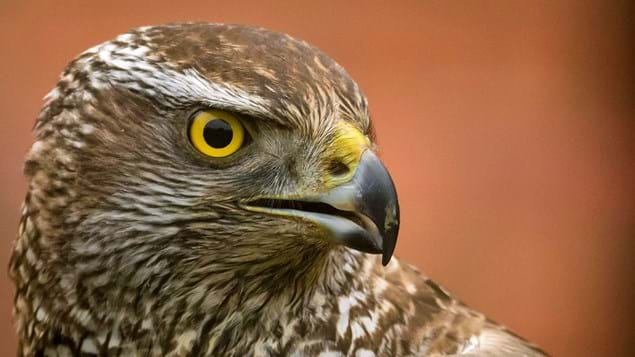H is for Hawk is an emotionally intense book. I found it in a charity shop, the bold print and staring eyes of the illustrated hawk on the spine catching my attention instantly. It is shot through with the intensity of the author’s loss, the intensity of the hawk itself, and the intensity of T.H. White’s often painful life story. Helen Macdonald is a Cambridge University fellow, an amateur falconer, and a writer. At the outset of the book she tells of the sudden and unforeseen death of her father, how it spun her life out of control, and how she regained a hold on herself by training a notoriously wild and temperamental bird – a goshawk.
Throughout the story of Macdonald’s personal trials while her world seems to be falling apart around her, she compares her own experiences to those of writer T.H. White, whose own attempt at training a goshawk serves as a warning. I’ve never read anything quite like H is for Hawk. Its structure is oddly freeform, like an extended essay. It switches between the author’s life and the story of T.H. White as he wrote his book The Goshawk, which Macdonald first read as a child. Everything interlaces together, but the relation between different aspects of the narrative is implied, rarely explicit. Madness is laced through everything – the author’s madness brought on by grief, White’s loneliness and repression, and the predatory frenzy of hawks. Macdonald writes about buying her goshawk:
“When you are broken, you run. But you don’t always run away. Sometimes, helplessly, you run towards. My reasons weren’t White’s, but I was running just the same. It was a morning in early August, and I was four hundred miles from home. What I was doing felt like a drugs deal. It certainly looked like one. For minutes on end I’d paced up and down a Scottish quayside with a can of caffeinated soda in one hand, a cigarette in the other, and an envelope stuffed with £800 in twenty-pound notes in my back pocket.”
Anxiety permeates the narrative as it jumps from White’s suppressed homosexuality and sadism, to Macdonald’s long months of depression and attachment issues, to her hawk’s fear and wildness. This all leads to an ending which gently releases the built-up tension. Macdonald has been clinging to her goshawk as a single point of stability in her life. She says goodbye to the hawk as she leaves it in an aviary to moult for the season, and begins to recover her own independent strength over a cup of tea with a friend and fellow-falconer.
H is for Hawk
Helen Macdonald
Jonathan Cape, 2014

